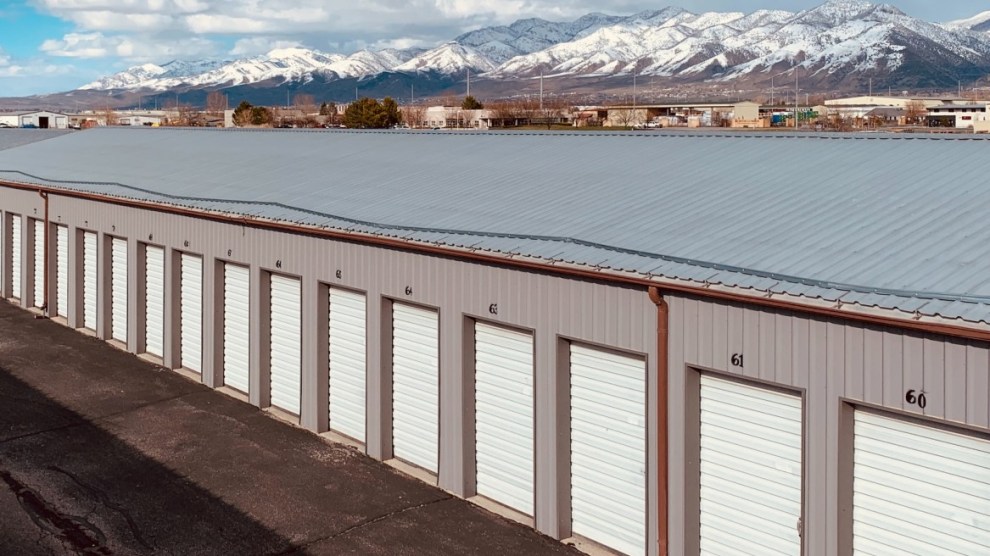The self-storage market is entering 2023 facing headwinds from flattening street rates, increased expenses, capital markets challenges and the slowing economy, but operators remain optimistic about income growth coming from resilient demand and higher renewal rates while deliveries begin to subside.
“We’re pleased rates are in line with what we expected; heading into 2023, we are well-positioned for a good year,” said one panelist at KeyBanc’s Self-Storage Investor Forum, in a statement that represented the consensus from two industry events held last week in New York. “Business is good; the customers are there,” said a panelist at the New York Self-Storage Association’s 2023 Investment Forum, also held last week in New York.
Operators at the two events generally forecast high single-digit increases in net operating income, with strong revenue growth tempered by unusually high increases in insurance, utilities and labor costs. While solid, growth in 2023 will be a comedown from the unprecedented performance of the last two years, when storage street rates and occupancy rates hit all-time highs and property values soared due to the robust fundamental performance and cheap cost of debt.
Long-Term Demand Drivers
Storage demand decelerated in the second half of 2022. Occupancy rates are coming down, but from unusually high levels. The average occupancy rate of self-storage REITs in 3Q 2022 was 94.5%, which was 200 basis points off the level of 3Q 2021, but more than 100 basis points higher than the rate in previous years. High occupancy rates enabled operators to push street rates to all-time highs, but asking rates for new leases have dropped slightly in recent months. National street rates for all 10×10 units decreased by $2 in November to $134, per Yardi Matrix, and are down 1% year-over-year.
The deceleration is prompting a debate about the cause: Was it a normal seasonal slowdown or a symptom of the weakening economy and high inflation? Most self-storage operators are optimistic. For one thing, street rates remain more than 10% above where they were before the pandemic. Another factor is that over the last year they have focused growth on raising existing customer rental income, or ECRIs.
Storage operators must always balance how much to push asking rents and optimal occupancy levels. If occupancy is too high, that might mean they aren’t pushing rates high enough. “We want to have some vacancy heading into the spring season (in 2023)” to maximize revenue, a panelist at the KeyBanc conference said. “We had too much occupancy in 2021.”
Another reason that operators remain confident is that the industry gained many new customers over the last two years that are expected to remain on board. “During the pandemic, many people discovered self-storage,” another KeyBanc panelist said. The pandemic-related growth in work-from-home created ongoing storage demand from individuals and businesses, while the length of existing customer stays is increasing. The bottom line is that the number of storage users is increasing, and many operators believe the boost to demand will be long-lived.
One potential headwind for storage in 2023 is softening housing sales due to higher mortgage rates, which has made purchasing a home more difficult. Migration is a key driver of storage activity. But operators are finding that weaker home sale activity creates demand from renters who have had to downsize and store space, or families who can’t afford to buy and instead remain in a small dwelling and use storage for items that don’t fit.
Self-storage has flourished in growing markets in recent years, as demand and rent increases have been highest in in-migration markets in the Southeast and Southwest. However, some operators said last week that the rents in gateway markets such as Los Angeles and New York—where stock per capita remains relatively light—are holding steady, while secondary markets that saw big increases in recent years are dialing back asking rents. “Instead of being an anchor, (New York) is now a bellwether,” said one KeyBanc panelist.
Capital More Expensive
Property fundamentals aren’t the only challenge for storage. Capital markets conditions are much different than a year ago, when property values and acquisition yields were hitting sector records and debt was plentiful. With the Federal Reserve pushing up short-term interest rates to fight inflation, mortgage rates have risen 250 to 400 basis points (or more), and capital for development is drying up.
The sharp rise in development costs, including the cost of debt, has led to a drop-off in the pipeline of new projects. Yardi Matrix records 812 self-storage properties under construction as of January, but that number will wane as projects are completed and there are a diminishing number of starts to backfill the pipeline. “There is not as much financing or equity for new developments,” said one NYSSA panelist. That means the recent robust growth in stock may continue in 2023 but will begin to wind down in following years, which is good for existing owners.
Existing properties may have to deal with a more stringent environment for refinancings. Properties with maturing mortgages that were financed at low rates in recent years may have to come up with capital to plug in the new gap under current conditions. A panelist at NYSSA gave an example of an asset with $1.8 million in net income that could qualify for $24 million in debt in recent years when rates were lower but would be limited to $18 million of debt under current conditions. That $6 million “gap” must be met upon refinancing, which offers an opportunity for investors that want to provide high-yield mezzanine debt or preferred equity.
For new acquisitions, high mortgage rates are an advantage for well-heeled investors that can pay with cash. Acquisition yields on stable properties fell in 1Q 2022 to about 5.0%, but cap rates rose 50 to 80 basis points by the end of 2022. Banks are more cautious and are requiring stricter structures and higher reserves.
Despite the deterioration in capital conditions from a year ago, industry players believe that storage fundamentals are healthy and the sector will perform well in a downturn. “Relative to other sectors, self-storage still has a high risk-return profile,” noted a NYSSA panelist.











I share similar optimism about the remaider of 2023. Rates in the Northwest appear stable. In some cases (RV and boat storage) they have gone up slightly.